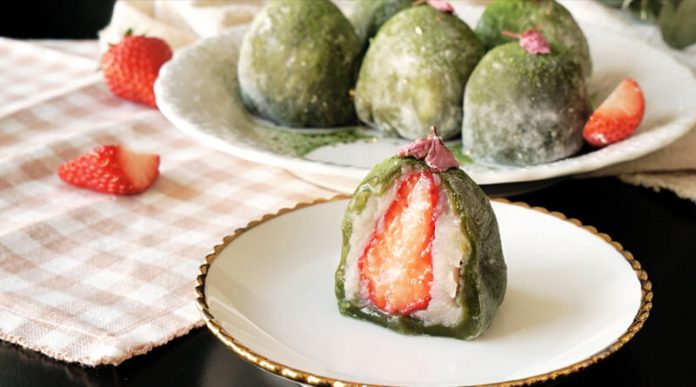Getting to know Japanese Culture #2: Mochi
Just about everyone has heard of Japan’s beautiful cherry blossoms or abundant rice, but have you ever heard of mochi? Technically, mochi is still just rice. Specifically, it is a rice-cake made from mochigome, and is treated almost as a delicacy, being a traditional food for the Japanese New Year. Mochigome is a short-grain rice, and can be distinguished by its short, round and opaque grains that get more sticky when cooked. This also creates the firmer but chewier texture that it is known for.
Now-a-days, mochi is a staple of Japanese culture, and can be found in various different forms throughout the year. Here are a few of the most popular ways to eat mochi:
Zōni (雑煮)

Zoni is a Japanese soup containing mochi rice cakes of course. The dish is associated with the Japanese New Year and is a ceremonial food, often considered the most auspicious of the dishes eaten on New Years Day. Most families and regions have their own variation.
Dango (団子)

Dango is a Japanese dumpling and made from mochiko (rice flour), and is related to mochi. The sweet is often served with green tea and is eaten year-round, but different varieties can be found in given seasons. Dango are often served on a skewer, as seen above.
Warabimochi (蕨餅)

Warabimochi is a jelly-like confection made from bracken starch and dipped in kinako, a sweet toasted soybean flour. It differs from true mochi, which is made with glutinous rice. Warabimochi is popular during the summertime, especially in the Kansai region and Okinawa. It is often sold from trucks, similar to an ice cream truck in Western countries.
Daifuku (大福)

Daifuku is another Japanese confection, consisting of a small round rice cake stuffed with sweet filling. It is most commonly filled with anko, which is a sweetened red bean paste made from azuki beans. Ichigo Daifuku (いちご大福) is one of the most popular forms, and is the same thing, simply with a strawberry as the filling.
Mochi Ice Cream (餅アイスクリーム)

Last but not least, is mochi ice cream. This treat is made up of pounded sticky rice, with an ice cream filling. It is usually in the shape of small, round balls, and the ice cream includes traditional flavors such as vanilla, chocolate, and strawberry. Most convenience stores will carry this ice cream, but only during the spring season. It is also commonly known as Yukimidaifuku (雪見だいふく) as shown on the packaging.
![]()
Now that you know more about mochi and the forms it can be found in, go out and try it! You can ask anyone who has tried one of the above forms, and they will almost always rave about how good it was. While native to Japan, it can be purchased online through sites like Amazon or others.




